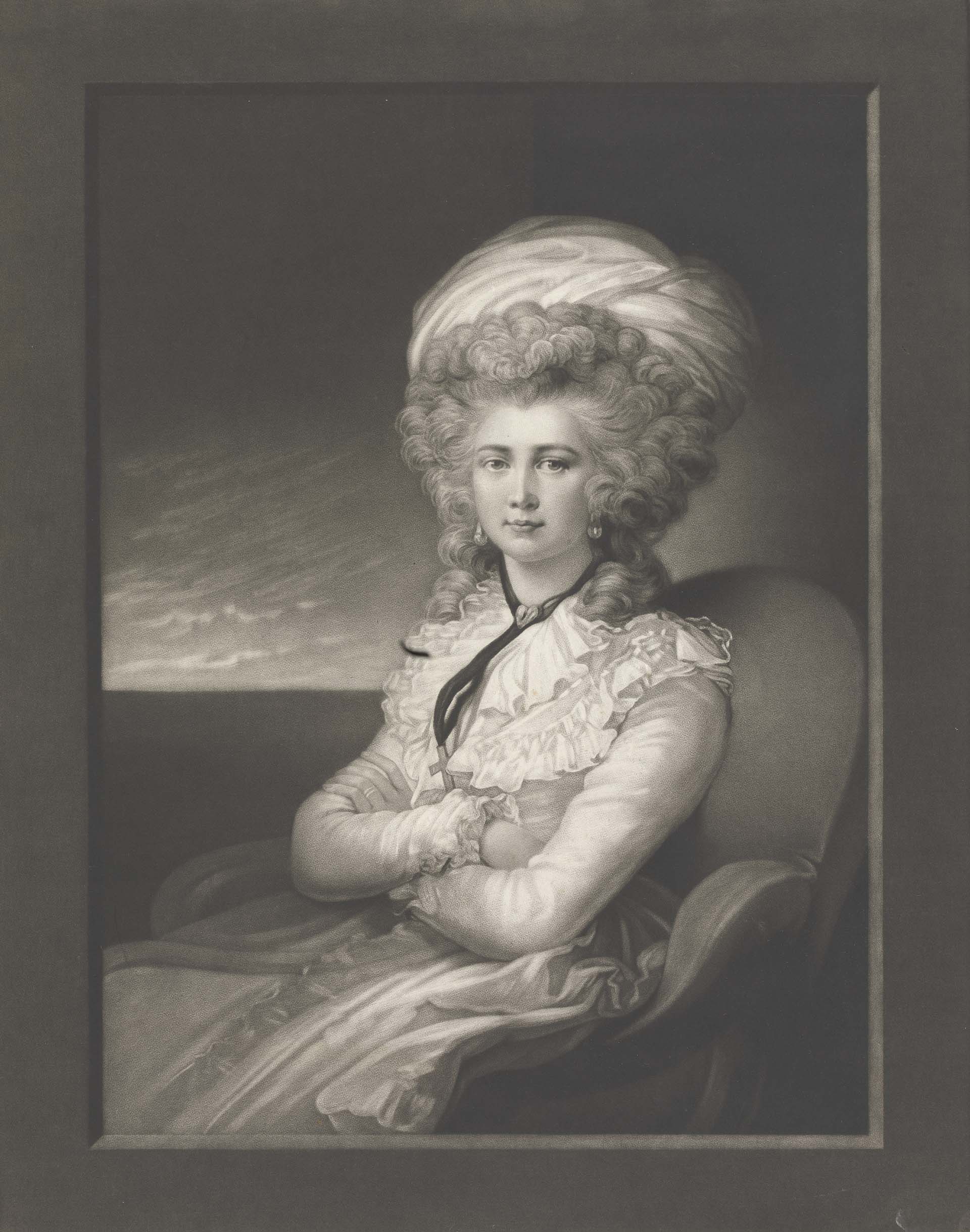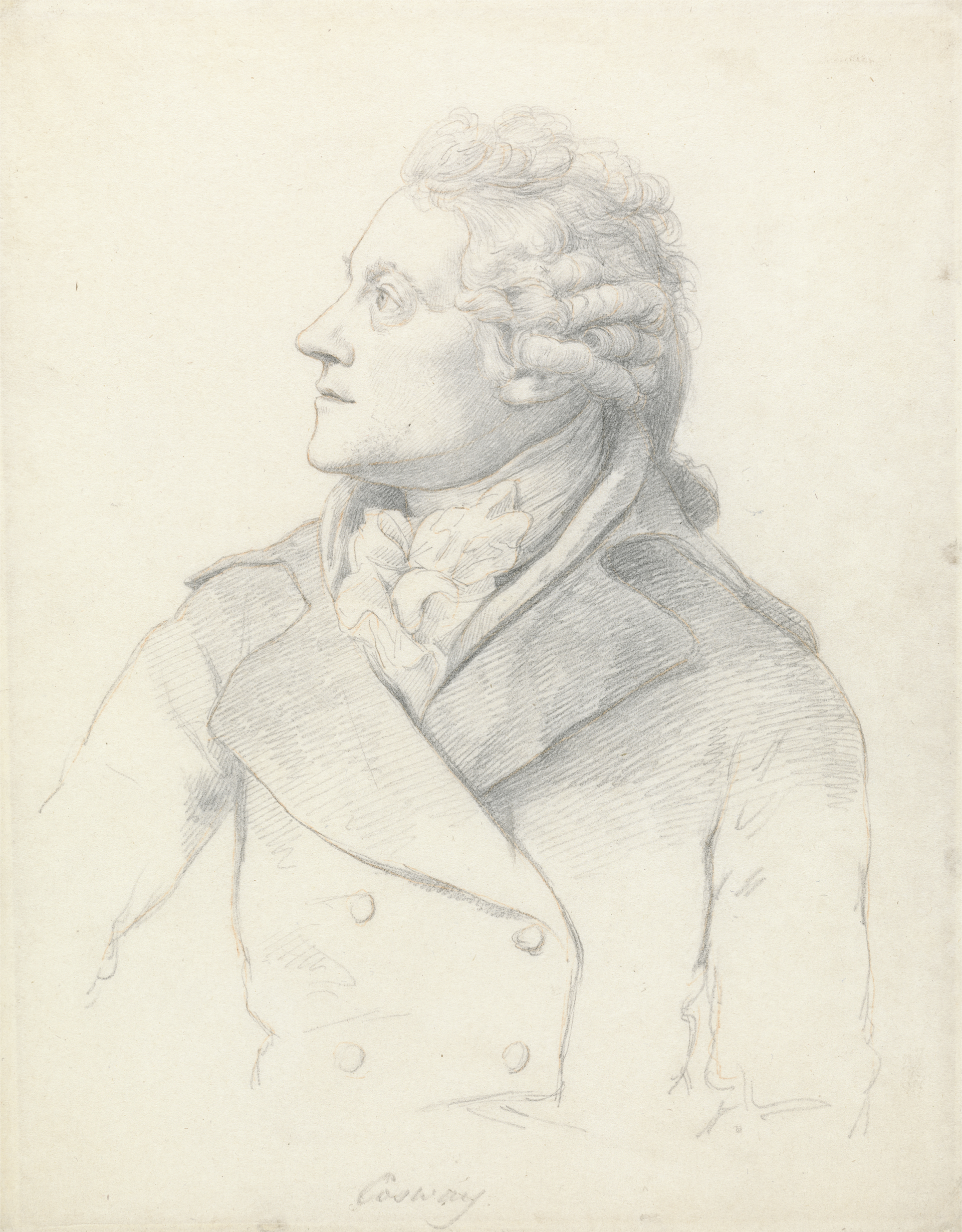Object of the Week
June 11, 2020
Today we celebrate the 261st birthday of Maria Cosway (1759–1838), one of the most brilliant British women of the eighteenth century. An artist, musician, singer, and pioneer educator, Cosway (née Hadfield) was born in Florence to English parents. She grew up in Italy and was a precocious artist. At the young age of eighteen she was elected to the Florentine Academy. In 1781, she married the diminutive English miniaturist Richard Cosway in London. He was nearly twenty years older, and their union was probably arranged, but together they became the celebrity art couple of their day. The contemporary artist Juliette Losq has argued that they fashioned themselves as a work of art in their own right, a kind of eighteenth-century Gilbert and George.
The young Prince of Wales (future George IV) was their close friend and patron in the 1780s, and Maria exhibited regularly at the Royal Academy in an amateur capacity. The mezzotint pictured here reproduces a self-portrait of Maria at the peak of her fame in Britain. With her arms crossed, a direct stare out to the viewer, and a prominent wedding ring and cross around her neck, Maria Cosway presents herself as a beautiful, respectable, and accomplished Catholic woman asserting her own space within the patriarchal culture of Protestant England. Around that same time, Valentine Green secured the right to reproduce this powerful self-portrait. Green was then the finest mezzotint engraver, and both artists stood to benefit from this chance to collaborate.
While recognized for her cultural influence, Maria’s private life was increasingly troubled. Her husband, unfaithful and controlling, refused to permit her to turn professional, and Maria’s artistic aspirations faltered. In the summer of 1786, the Cosways were in Paris when Maria met Thomas Jefferson. Jefferson instantly fell in love with her. He even managed to dislocate his right wrist when trying to impress her by vaulting a fence and suffered pain when writing for the rest of his life. But Maria remained faithful to her rakish husband. With her marriage in difficulty and suffering postnatal depression after the birth of a daughter, she left London for Italy in 1790.
Despite brief returns to England, she separated from her husband, though they remained married and eventually settled in Lodi, northern Italy. There, in 1812, she founded a convent school, the Collegio Beata Vergine delle Grazie, for young girls aged six to twelve. It was later refounded as the Collegio delle Dame Inglesi in 1833, under the patronage of the Austrian emperor. This pioneering school, run by the Congregation of Jesus—itself founded by another remarkable Englishwoman, Venerable Mary Ward (1585–1645)—educated elite young Italian women in the liberal arts, music, and fine arts. Maria Cowsay died at the age of seventy-nine and was buried in Lodi, where the Fondazione Maria Cosway keeps her legacy and memory going to the present day.
Written by Matthew Hargraves, Chief Curator of Art Collections, Yale Center for British Art




